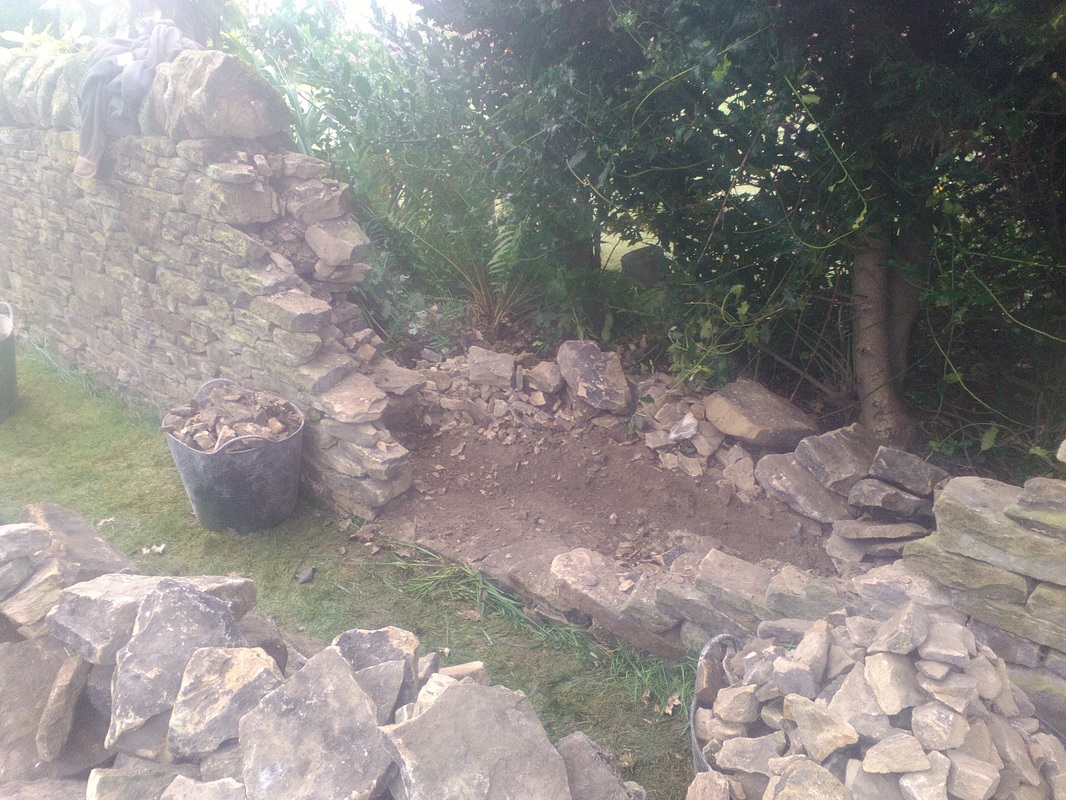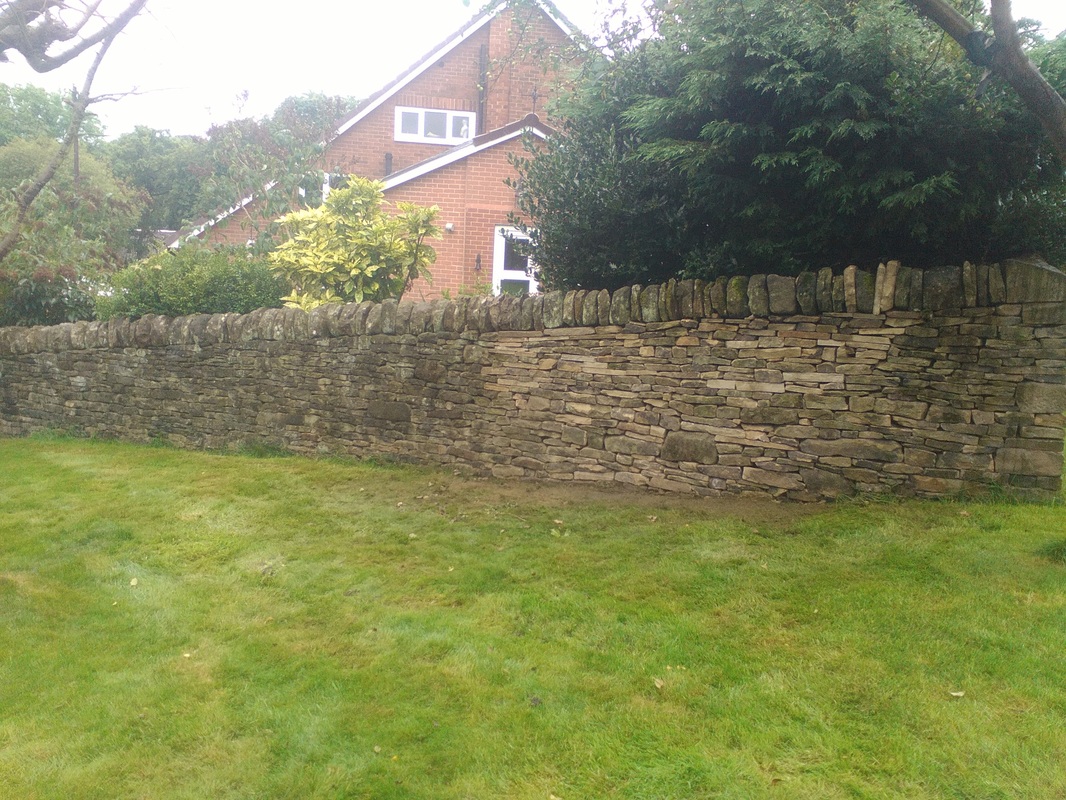|
A recent repair of a tumbled down section of dry stone walling is a good reminder of how important it is to have a strong structure to a dry stone wall. Aside from sound foundations and correct wall batter, or pitch, a common problem to encounter with fallen sections is that the stones are mostly laid "length on" like bricks rather than placed into the wall for greater strength. This means that in the middle of the wall a larger space is left having to be filled in with more stone rubble infill known as hearting or packing. When the wall is mostly hearting through the centre and there are also no longer stones, called 'through' stones or tuskers, placed right the way through, the wall will not stay up long. This is because there is nothing tying the two outer skins of the wall together and it is mostly relying on the action of gravity from the wall batter. Building in this way is not good practice and can be called 'trace walling', however there can also be other reasons. The waller could have only had access to smaller pieces of stone and was making do with the materials to hand or perhaps had limited stone and was making the outer stone go further and using more infill. It may also be that appearance had been prioritised over strength as the longer 'faces' of the stone can give a more regular masonry appearance. A wall can appear well put together on the surface, but not be strongly built. This means that when a wall comes down and the original has been built in a 'trace walling' way, in order to strengthen it you can expect to have to bring in quite a bit of extra stone. The original wall will not be a dense structure and once you start turning the stones inwards this means that you will be making the wall more dense, meaning you'll ultimately need more stone. Also. if there are few or no 'through' stones, then you'll need to bring these crucial stones in as well. The waller is always on the look out for 'throughs', which are laid in several alternate bands in the wall and are very important in holding it all together.
Comments are closed.
|
Author
Richard Meller Archives
May 2017
Categories
All
|


 RSS Feed
RSS Feed